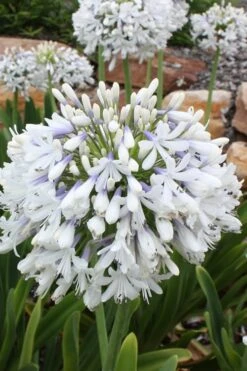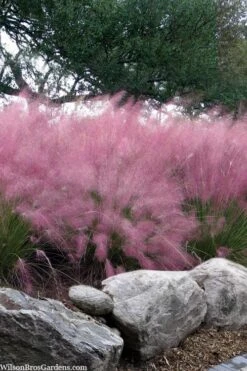Humpback Whale Giant Hosta Lily – 1 Gallon Pot
$49.97 Original price was: $49.97.$34.98Current price is: $34.98.
SKU: D2LSC 0310918728 Category: PERENNIAL PLANTS
- 7 days return and exchange
- 100% Quality Satisfaction
- Shop with Confidence
- No Compromise on Quality

‘Humpback Whale’ Giant Hosta Lily
Hosta ‘Humpback Whale’
Plant Details
USDA Plant Hardiness Zones: 3a-9b Find Your Zone
Plant Type: Perennial
Height at Maturity: 3′
Width at Maturity: 8′ !!!
Spacing: 6′ for mass plantings, 12’+ for space between plants
Spacing: 6′ for mass plantings, 12’+ for space between plants
Growth Habit / Form: Mounding Clump
Growth Rate: Moderate
Flower Color: White
Flower Size: 2″
Flowering Period: Summer
Flower Type: Trumpet-shape clustered on tall stalks
Fragrant Flowers: NA
Foliage Color: Blue in spring turning Green by Summer
Fragrant Foliage: NA
Berries: NA
Berry Color: NA
Sun Needs: Full Shade to Part Shade (avoid direct afternoon sun)
Water Needs: Average to Low
Soil Type: Clay (amend heavy clay to ensure good drainage), Loam, Sand, Silt
Soil Moisture / Drainage: Well-drained, moist
Soil pH: 5.5 – 7.5 (Acid to Slightly Alkaline)
Maintenance / Care: Low
Attracts: Visual Attention, Butterflies, Hummingbirds
Resistances: Disease, Drought, Heat, Insect, Rabbit, Deep Shade, Slug
Description
Bred and introduced by the late Mildred Seaver, known as the “Queen of Hostas,” the ‘Humpback Whale’ Hosta forming a truly massive 3 feet tall by 7 feet wide mound at maturity. Large, heart-shape, blue-green leaves develop with a unique hump in the middle that forces the end of the leaf to point downwards. By summer the leaves will have turned a rich ocean green at which time sturdy flower stems bearing abundant abundant near-white flowers will appear to feed the hummingbirds. One of the largest of the hostas in our gardens, rivaling ‘Empress Wu’, anyone with some shade and enough space has got to have one of these impressive giants in their garden!
About the Breeder
Mildred Seaver was known in hosta circles as the “Queen Bee” or “Queen of Hostas.” She was one of the founding members of the New England Hosta Society. She was the only living person ever featured on the cover of The Hosta Journal (a magazine of the American Hosta Society) in the Spring of 1986. She was also the first winner of the Eunice Fischer Distinguished Hybridizer Merit Award in 2006. According to her daughter, Muriel, Mildred Seaver’s philosophy on life was that “every day comes with the chance of surprise and a possible miracle.” An incredible attitude to have considering that she lived through the Great Depression. Mildred lived her life with an irrepressible zeal that affected everyone who met her. Mildred left this world on March 6, 2011 at the age of 98.
Landscape & Garden Uses
Growing in a dense mound 3 feet tall and up to 7 feet wide with outstanding color and texture, Humpback Whale Hosta is ideal for use as a a specimen, in groupings, or massed in large shady gardens beds and landscape borders. It is perfect under large shade trees and any other shady location. Don’t think you have any shade? Look on the east side of your home. Humpback Whale Hosta is also impressive grown in large containers and is a fine addition to hosta gardens, hummingbird gardens, and woodland shade gardens.
Suggested Spacing: 6 feet apart for mass plantings; 12 feet or more apart for space between plants
Growing Preferences
‘Humpback Whale’ Hosta Lily is easy to grow in most any moist but well-drained soil of average fertility and part shade to shade. Morning and evening sun is okay but we suggest avoiding direct afternoon sun. Give this enormous Hosta plenty of room to grow!
Helpful Advice
Click on a link below to find helpful advice from our experts on how to plant, fertilize, prune and water Hosta Lilies.
How To Plant Hosta Lilies In The Ground & Pots
How To Fertilize and Water Hosta Lily Plants
How To Divide & Prune Hosta Lily Plants
Plant Long & Prosper!
Meet The Wilson Brothers & Staff
Questions? Contact Us!
Be the first to review “Humpback Whale Giant Hosta Lily – 1 Gallon Pot” Cancel reply
Related products
New
PERENNIAL PLANTS
New
PERENNIAL PLANTS
Katie Purple Dwarf Mexican Petunia (Ruellia) – 10 Pack Of Quart Pots
New
PERENNIAL PLANTS
New
PERENNIAL PLANTS
New
PERENNIAL PLANTS
New
PERENNIAL PLANTS
New
PERENNIAL PLANTS
New































Reviews
There are no reviews yet.